Snakes are an incredible species, and it seems like with each study launched into them, more interesting things about them are discovered. One particularly unique feature that snakes have is their mouth.
Although snakes have mouths just like humans, their mouths couldn’t be more different than ours. This article discusses 10 wild facts about snakes that you should know. Let’s get into it!
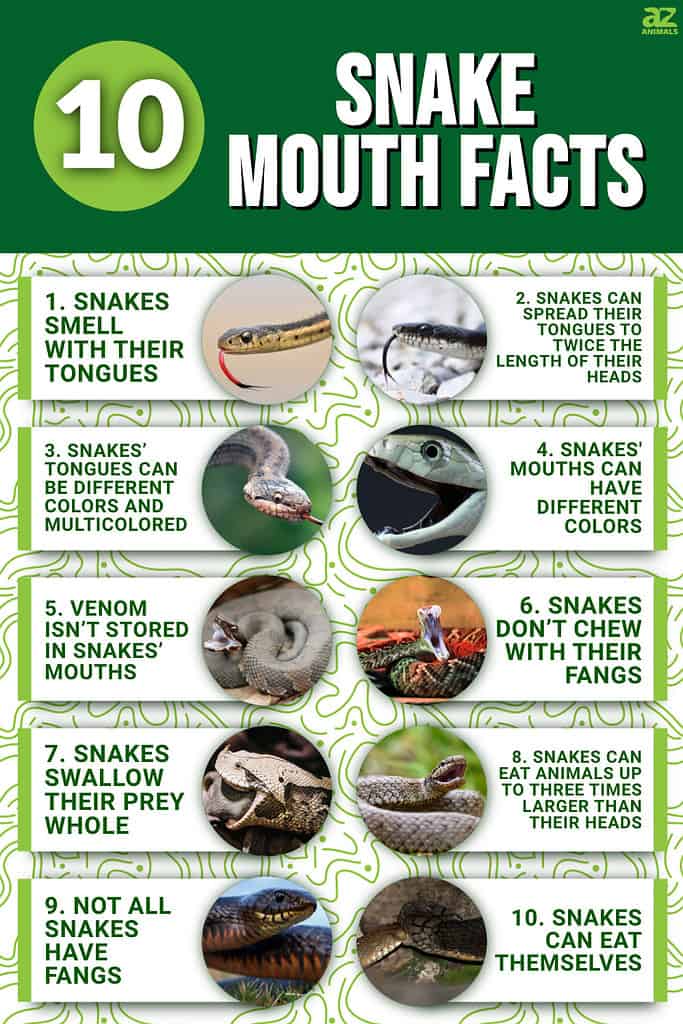
1. Snakes Smell With Their Tongues

The garter snake has a red tongue with a black tip.
©Natalia Kuzmina/Shutterstock.com
Snakes have noses, but they do not use them to smell. Snake’s tongues perform that duty. Snakes flick their long tongues in the air, spreading them apart to gather chemical particles in the air. These chemical particles stick to their tongues and are swiftly transported to their Jacobson’s organ, located behind the snake’s nasal cavity. The Jacobson’s organ interprets and transmits the particles to the brain.
2. Snakes Can Spread Their Tongues To Twice The Length Of Their Heads

Sometimes, the distance between the two parts of their tongues can be twice the size of their head.
©Seth LaGrange/Shutterstock.com
You probably already know that snakes have forked tongues or tongues divided into two. But did you know that snakes can spread their tongues apart really wide? Sometimes, the distance between the two parts of their tongues can be twice the size of their head. We imagine that the farther they spread, the more information they “taste.”
3. Snakes’ Tongues Can Be Different Colors AND Multicolored

Snakes’ tongues come in different colors such as cream, blue, red, and even black!
©iStock.com/Tom Haley
Humans are pretty limited in tongue colors, but this isn’t the same for snakes. Snakes’ tongues come in different colors, such as cream, blue, red, and even black!
Even more astonishingly, snakes’ tongues can sometimes have more than one color. The garter snake, for example, has a red tongue up until the fork part, where it turns black. Many other snakes have multicolored tongues. Sadly, not many studies have been carried out on snake tongue colors, so we do not know the reason for this.
4. Snakes’ Mouths Can Have Different Colors
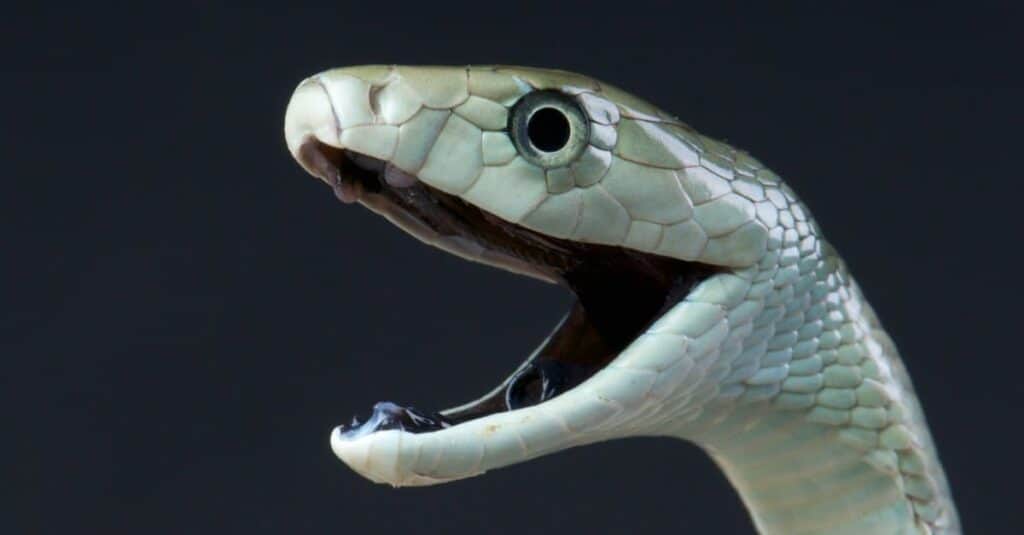
Black mambas are rarely black, and they’re actually named for the inside of their mouth.
©reptiles4all/Shutterstock.com
Snakes’ mouths have different colors. The black mamba, for example, has a totally black mouth. Its mouth has an almost creepy coffin shape, and everything from its tongue to the roof and sides of its mouth is an inky black color. It’s no shocker that the black mamba is one of the most venomous snakes.
Other snakes, such as the cottonmouth, do not have fully pink mouths. The cottonmouth has a whitish interior which gives it its name. However, like humans, many snakes have the usual pink color.
5. Venom Isn’t Stored In Snakes’ Mouths
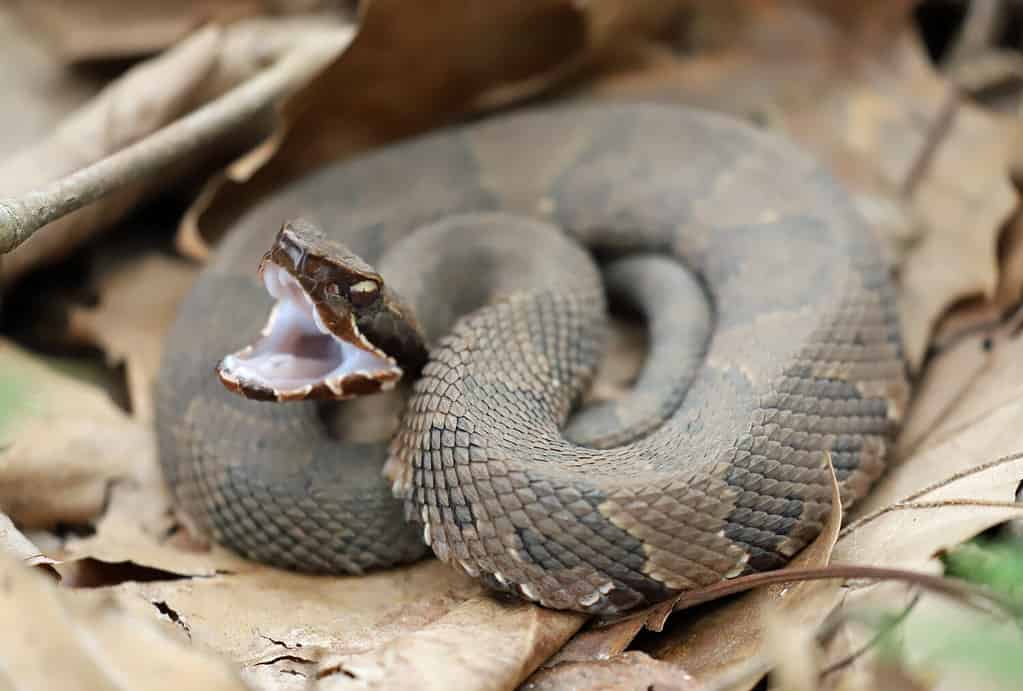
The alveoli gland, also known as the venom gland, receives the venom after it is produced by the salivary glands located in the back of their heads.
©KF2017/Shutterstock.com
Contrary to the popular misconception, snakes do not store venom in their mouths or fangs. Instead, they store it in a gland called the alveoli. The alveoli gland, also known as the venom gland, receives the venom after it is produced by the salivary glands located in the back of their heads. When the snake bites, the venom is transported from the alveoli to the snake’s fangs.
6. Snakes Don’t Chew With Their Fangs
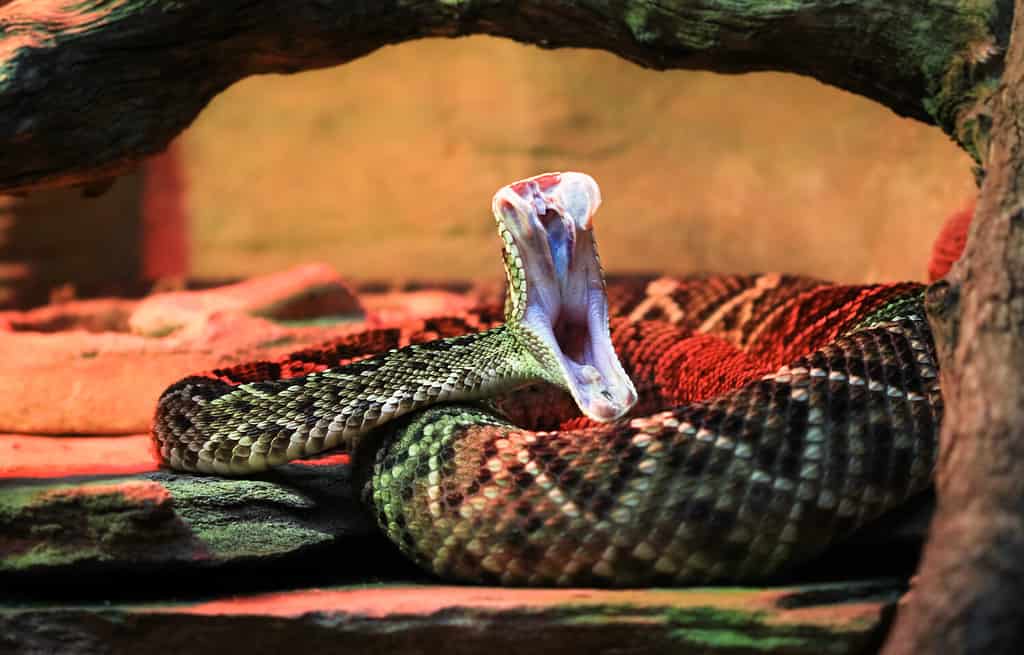
A snake’s fangs are reserved for battle where they use them to break their victims’ skins and inject venom.
©Kevin Wells Photography/Shutterstock.com
Considering how different snakes are from us, it probably doesn’t come as a surprise that these snakes do not chew with their teeth. Their fangs are reserved for battle; they use them to break their victims’ skins and inject their venom.
Snakes may lose their teeth during battle and sometimes swallow them. Luckily, their bodies are equipped for this, and the tooth ends up passing in their excreted matter. If you’re wondering if snakes stay toothless after losing their fangs, they do not. Snakes’ fangs grow back as soon as 5 to 10 days!
7. Snakes Swallow Their Prey Whole
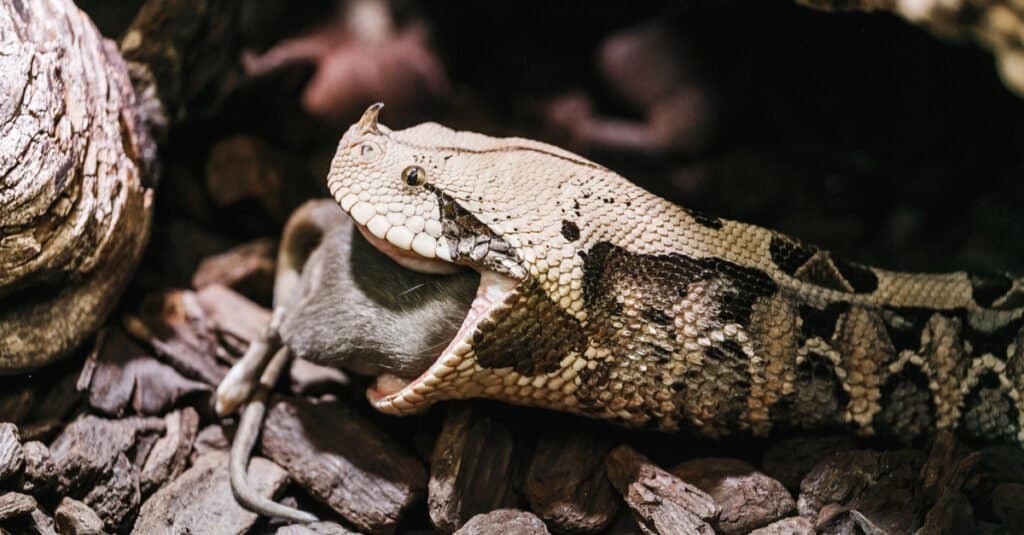
Snakes swallow their prey whole and headfirst.
©frantic00/Shutterstock.com
Snakes do not chew, as we’ve stated before. Instead, these animals swallow their prey whole. Although snakes have very different hunting styles according to their species, they have several similarities. Snakes, such as vipers with strong jaws and solenoglyphous fangs, are likely to clamp onto their prey, inject their venom, and keep them clamped between their jaws while the venom takes effect.
However, in some cases, snakes release their prey immediately after biting them, especially if they have proteroglyphous fangs that are considerably shorter or if their prey is stronger. As you might imagine, animals do not willingly give themselves to snakes and often struggle, and in such situations, snakes may lose their fangs. Once their prey is weak enough, snakes will proceed to eat them whole without chewing.
8. Snakes Can Eat Animals Up to Three Times Larger Than Their Heads

Snake mandibles, the lower jaw bone, are connected to the back of the snake’s jaw by a stretchy ligament.
©Pedro Luna/Shutterstock.com
Snakes do not “unhinge” their jaws, as many say. Instead, they have a really flexible mouth anatomy. They have unique skull bones, mandibles, and ligaments. Mandibles refer to the lower jaw bone and are connected to the back of the snake’s jaw by a stretchy ligament. This gives them flexibility and allows them to open their mouths really wide.
A snake can eat an animal up to 3 times its head size. Recently-fed snakes can be seen with ridiculously large or bulging bellies. However, the food gets digested in no time because snakes can manipulate their metabolism speed to help them digest food. Snakes can often go weeks and even months without food after large meals.
9. Not All Snakes Have Fangs
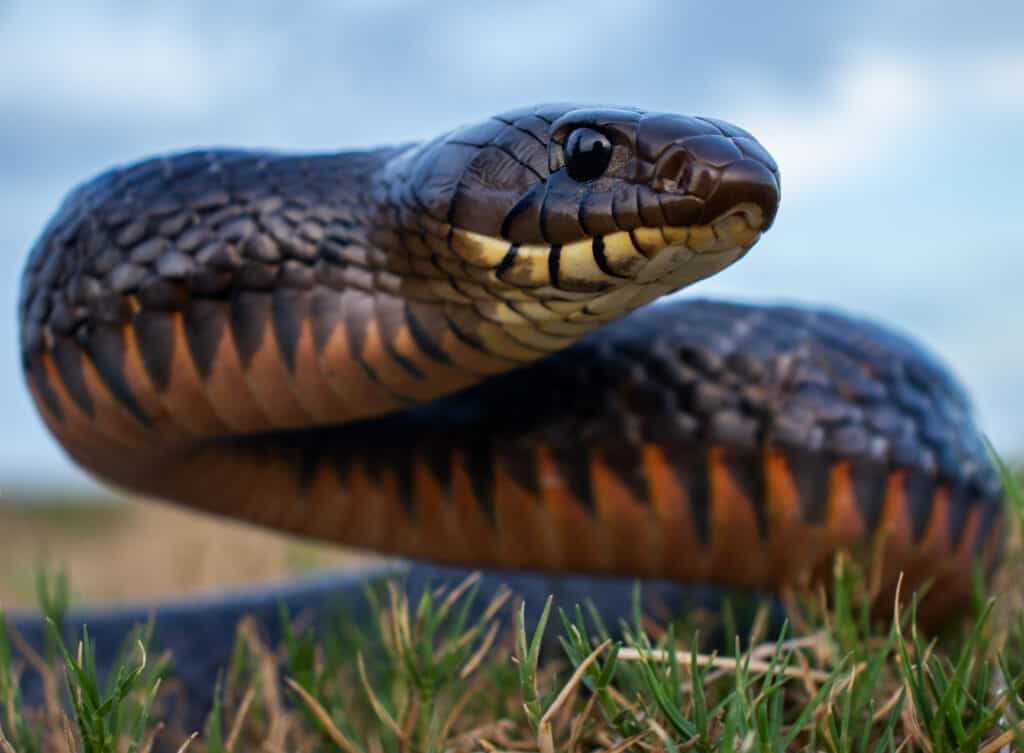
Indigo snakes, like boa constrictors and pythons, do not have fangs.
©Radiant Reptilia/Shutterstock.com
Snakes have two types of teeth; normal teeth and fangs. Most snakes have teeth, but only venomous ones have fangs. There are three types of fangs: solenoglyphous, proteroglyphous, and opisthoglyphous.
The number of teeth in a snake’s mouth varies according to species. Many have 6 rows of teeth: 2 on top, 2 at the bottom, and 2 on the roof of their mouth or 4 at the bottom and 2 at the top. Snakes can have anywhere from 100 to 300 teeth.
10. Snakes Can Eat Themselves
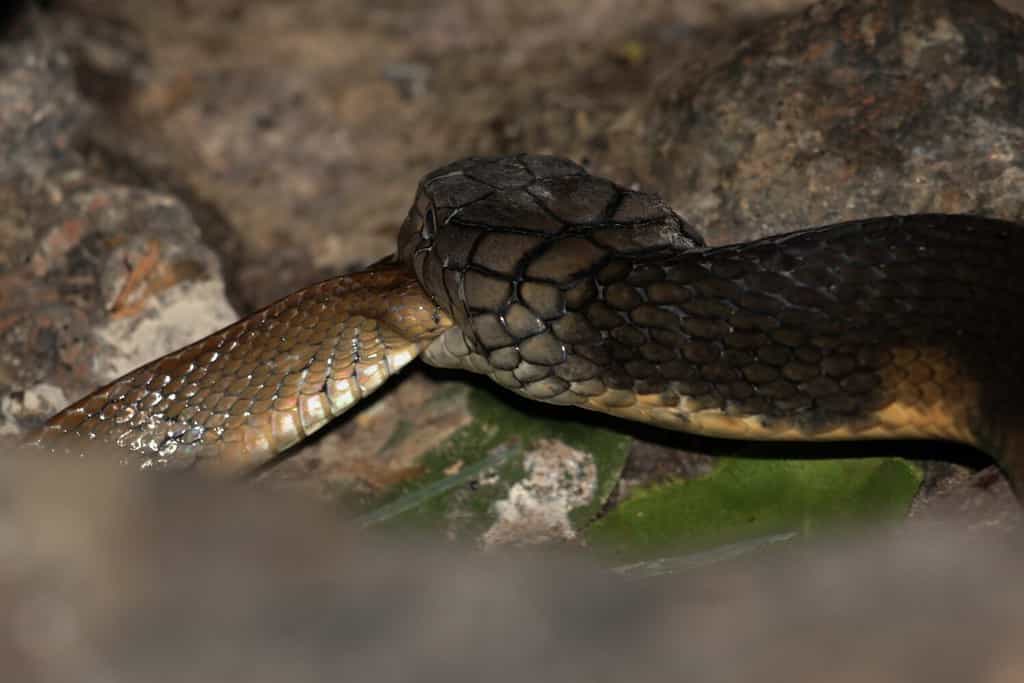
Snakes usually eat themselves when they are stressed or confused.
©Padodo/Shutterstock.com
As if snakes weren’t weird enough, they are one of the few animals that accidentally eat themselves. This usually happens when snakes are distressed or confused. It may start with a bite on its tail, and then the snake proceeds to swallow the rest of its body and may not notice until its stomach acids begin to eat at its flesh. The pain causes them to panic and wildly trash about. If their stomach acids don’t kill them first, their frantic movements will destroy their internal organs.
The photo featured at the top of this post is © Nathan A Shepard/Shutterstock.com
Discover the "Monster" Snake 5X Bigger than an Anaconda
Every day A-Z Animals sends out some of the most incredible facts in the world from our free newsletter. Want to discover the 10 most beautiful snakes in the world, a "snake island" where you're never more than 3 feet from danger, or a "monster" snake 5X larger than an anaconda? Then sign up right now and you'll start receiving our daily newsletter absolutely free.
Thank you for reading! Have some feedback for us? Contact the AZ Animals editorial team.






